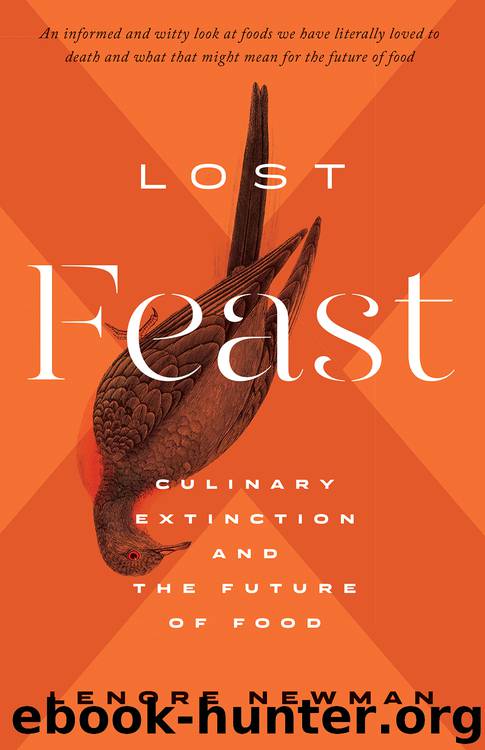Lost Feast by Lenore Newman

Author:Lenore Newman
Language: eng
Format: epub
Publisher: ECW Press
Published: 2019-10-07T16:00:00+00:00
* * *
Pears are my favorite fruit. I like the first pears of the season. I like pear crisp with sugar oat topping. I like the tiny Seckel pears that sometimes appear in the market, I like the perfection of a pear at its prime and I love the clever things we do with pears to store them through the year. I make pear jelly each year, and sometimes bottle pear halves in their juice to warm up with a little cream on cold winter nights. One winter in New York, I treated myself to the pears glacé at Russ & Daughters, one of the last great appetizer shops of the Lower East Side. They are best known for their lox, but I adored their fruit preserved through boiling in sugar solution, a method invented in Arabia in the fourteenth century. I ate the sticky sweet fruit with a little ice cream.
Fruit is our first forbidden love, and it is designed to beguile. The future of any fruiting species depends upon desire. Fruiting trees are sexual beings, a fact that caused a scandal when it first became widely known. The Bible took a chaste view of plant life, being clear on “like begetting like” and, as the apostle Paul says in Galatians 6:7, “Whatsoever a man soweth, that shall he also reap.” However, as most gardeners know, this isn’t true. I suppose Paul never encountered a mystery squash sprouting in his compost heap. Fruit starts as a flower, and these flowers come in both male and female versions. Carl Linnaeus described flowers as numerous women in bed with the same man, a view that was received about as well as one might expect by polite society. Equally unpopular with the Church, German botanist Rudolf Camerarius published the luridly titled Letter on Plant Sex in 1694, describing his experiments with the sex life of grain. Augustinian friar Gregor Mendel came to similar conclusions in the 1850s as he experimented with peas in a walled garden. He mapped out exactly how offspring expressed their parents’ traits, discovering dominant and recessive genes. Fruit is, in effect, a plant egg, ready to hatch into something new. And whenever one of the eighty thousand or so edible fruiting species produces offspring, we can get something very close to the parent plant, or mutation or hybridization might produce a surprise. Humans have sometimes watched this process from the sidelines and others have actively helped it along. An old Welsh proverb sums up the sexual magic of fruit nicely; a seed hidden in the heart of an apple is an orchard invisible.
Consider the pear. Pyrus communis is one of the oldest temperate fruits, its origin found at the eastern end of the trading routes between Asia and Europe. Recall for a moment the shifting sands on the fringes of the Roman Empire. The Tian Shan mountains, source of griffin lore, are the likely source of the pear as well. The mountains boasted plentiful water and a staggering
Download
This site does not store any files on its server. We only index and link to content provided by other sites. Please contact the content providers to delete copyright contents if any and email us, we'll remove relevant links or contents immediately.
The Lonely City by Olivia Laing(4750)
Animal Frequency by Melissa Alvarez(4395)
All Creatures Great and Small by James Herriot(4232)
Walking by Henry David Thoreau(3893)
Exit West by Mohsin Hamid(3777)
Origin Story: A Big History of Everything by David Christian(3648)
COSMOS by Carl Sagan(3554)
How to Read Water: Clues and Patterns from Puddles to the Sea (Natural Navigation) by Tristan Gooley(3406)
Hedgerow by John Wright(3275)
The Inner Life of Animals by Peter Wohlleben(3259)
How to Read Nature by Tristan Gooley(3249)
How to Do Nothing by Jenny Odell(3232)
Project Animal Farm: An Accidental Journey into the Secret World of Farming and the Truth About Our Food by Sonia Faruqi(3177)
Origin Story by David Christian(3147)
Water by Ian Miller(3127)
A Forest Journey by John Perlin(3027)
The Plant Messiah by Carlos Magdalena(2883)
A Wilder Time by William E. Glassley(2818)
Forests: A Very Short Introduction by Jaboury Ghazoul(2790)
